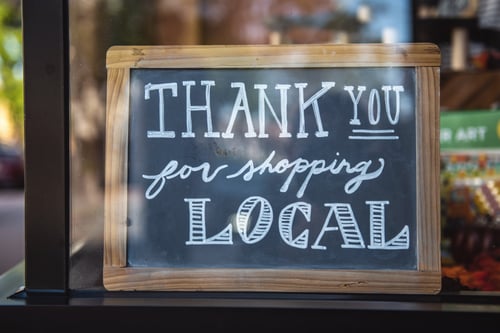 "Alone we can do so little, together we can do so much." - Helen Keller
"Alone we can do so little, together we can do so much." - Helen Keller
As the country continues to grapple with the pandemic's economic effects, the way we arrange our lives seems to have changed entirely overnight, whether it is our leisure activities, our studies, or our working habits.
The effect on grocery shopping is no different. Last year, the coronavirus disrupted traditional shopping patterns nationwide as grocery stores battled global supply chain issues. It's safe to say that 2020 has reminded us never to take flour, eggs, or toilet roll for granted ever again.
Although ecommerce behemoths are tightening their grip on our shopping habits, one brick-and-mortar business model has proved remarkably resilient during economic hard times - the humble cooperative (or co-op for short).
What is a food co-op?
In certain respects, food co-ops are comparable to traditional grocery stores, but they differ in one crucial aspect: these communities are grocery stores owned and run by their members. The members themselves benefit from the profits.
Although food co-ops are the most popular type, there are co-ops in more areas than you think, including health centers, daycares, and credit unions.
You might assume that all businesses are liable to suffer during economic downturns. But co-ops actually grew in size and popularity following the Great Depression of the 1930s and the Great Recession of the early 2000s. What can account for this resilience in the face of crises? Here are some possible reasons:
- Prices are generally cheaper: Food co-ops provide communities with inexpensive food while standing in stark contrast to the for-profit mentality that motivates most other grocery stores. Food co-ops deliver food to community members at the lowest possible price, thereby making their income go further, a boon during times of economic hardship.
- They help counter financial and social inequalities: Economic crises almost always impact communities of color disproportionately, which is why many co-ops are formed in response to ethnic and cultural inequality. This allows community members to pool their resources, resolve inequities, and create resilience in the food system.
- Profits are reinvested: Participants contribute equitably to the cooperative's resources and manage them democratically. The profits of a cooperative are paid back to the members in the form of lower prices, reinvested in the cooperative, or used to provide services to the members.
At the North Country Food Co-op in the Adirondacks, during the pandemic's height, the Adirondack Harvest noticed a glut of new customers searching for toilet paper, ground beef, or other staples. They found that the co-op was better at remaining stocked in these items by being small, versatile, and locally sourced, even as the larger stores faced crippling shortages.
Resilience from the community
Amidst the pain that communities are feeling during this pandemic, it's refreshing to witness communities coming together to provide locally-sourced food at a reasonable price. The next time you are doing the weekly grocery run, why not check out your local food cooperative? Your bill might be cheaper, you're helping sustain a vital community source of food, and you just might find things that are sold out elsewhere.